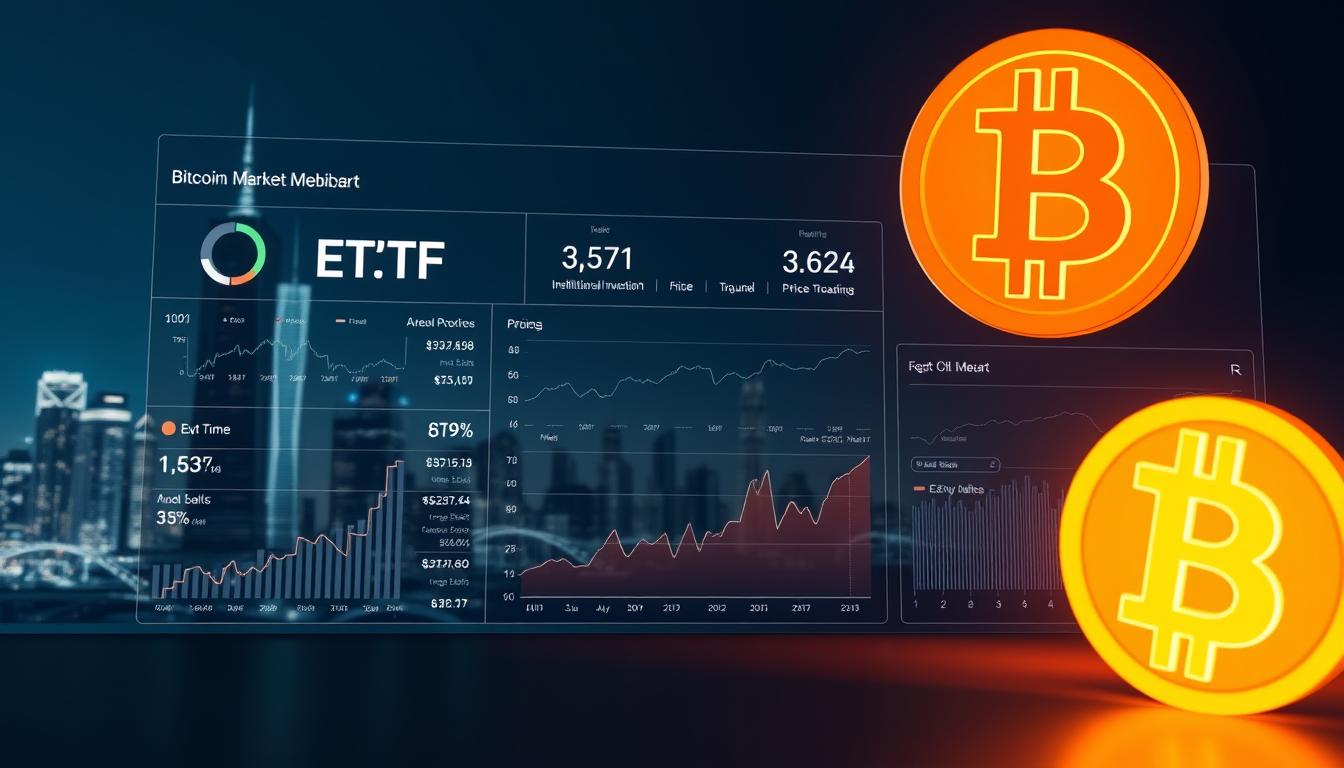Now Reading: Cryptocurrency money laundering AML compliance: Best Practices
- 01
Cryptocurrency money laundering AML compliance: Best Practices
Cryptocurrency money laundering AML compliance: Best Practices

The digital finance world is growing fast. With this growth comes new challenges. Protecting your business from financial crime is now more critical than ever.
This guide provides a clear path forward. We will explore the essential steps every organization must take. A strong defense is not just a rule to follow. It is a core part of a trustworthy business.
Failing to act can lead to severe consequences. These include heavy fines and a damaged reputation. Staying informed about the latest crypto regulation updates is the first step to safety.
Our approach covers technology, policy, and people. A multi-layered strategy is the only way to build real security. This protects your operations and the entire financial system.
Key Takeaways
- Digital asset growth demands stronger financial security measures.
- Effective programs combine technology, clear rules, and staff training.
- Non-compliance risks major financial penalties and loss of trust.
- Staying current with regulatory changes is a business necessity.
- A proactive stance safeguards your company and the wider ecosystem.
Overview of Cryptocurrency Money Laundering AML Compliance
Digital currency platforms face unprecedented challenges in maintaining financial integrity. The decentralized nature of blockchain technology creates unique opportunities for illicit activities.
Understanding the Scope of AML in Crypto
Anti-money laundering frameworks have adapted to address digital asset transactions. These systems target financial crimes like fraud and terrorism financing.
The pseudonymous nature of blockchain networks requires specialized monitoring tools. Effective programs must identify suspicious patterns across decentralized platforms.
| Year | Reported Losses (US) | Industry Fines | Year-over-Year Change |
|---|---|---|---|
| 2022 | $2.57 billion | $3.2 billion | Baseline |
| 2023 | $3.94 billion | $5.8 billion | 53% increase |
| Trend | Significant growth | Major escalation | Accelerating concerns |
Why Compliance Matters in the Digital Age
Robust security measures protect businesses from regulatory penalties. They also build trust with financial institutions and customers.
Platforms with strong programs attract reputable partners. This creates a competitive advantage in the growing digital finance sector.
Effective monitoring safeguards the entire ecosystem. It helps legitimate businesses thrive while deterring criminal exploitation.
The Fundamentals of AML in the Cryptocurrency Ecosystem
At the heart of blockchain networks lies a fundamental tension between transparency and privacy. Public ledgers like Bitcoin and Ethereum record every transaction for anyone to see. Yet wallet addresses remain pseudonymous, creating both oversight opportunities and identity challenges.
This paradox creates unique hurdles for financial security programs. Decentralized networks operate across borders without traditional banking oversight. Transactions move instantly between parties worldwide, bypassing conventional monitoring systems.
The flow of digital assets follows a distinct pattern through the ecosystem. Illicit funds enter the space through various entry points. They then undergo complex layering across multiple wallets and platforms. Finally, integration returns them to the legitimate economy.
| Blockchain Feature | Security Advantage | Monitoring Challenge | Industry Impact |
|---|---|---|---|
| Public Ledger | Transaction transparency | Pseudonymous addresses | Enhanced traceability |
| Decentralization | No single point of failure | Cross-border complexity | Global coordination needed |
| Immutability | Permanent record keeping | Irreversible transactions | Investigation assistance |
Understanding these technical basics is crucial for effective risk management. Blockchain addresses, transaction hashes, and on-chain activities form the foundation. This knowledge informs strategic decisions and technology investments.
Business leaders must grasp these ecosystem fundamentals to build robust security programs. The technical context shapes compliance approaches and operational safeguards. A solid foundation supports advanced monitoring techniques discussed later.
Key Regulations and Guidelines for Crypto AML
Global financial authorities are implementing standardized rules to monitor blockchain-based activities. These frameworks create consistent expectations across international markets. They help build trust in digital asset systems.
FATF Recommendations and the Travel Rule
The Financial Action Task Force sets international standards for financial security. Their guidelines extend to virtual asset service providers worldwide. The Travel Rule requires sharing customer details for transactions above specific thresholds.
Typically applying to transfers over $1,000, this rule mandates information exchange between institutions. Sender and receiver details must be verified and transmitted securely. This creates transparency in digital asset movements.
| Jurisdiction | Travel Rule Threshold | Information Required | Implementation Date |
|---|---|---|---|
| United States | $3,000 | Sender/Receiver details | 2020 |
| European Union | €1,000 | Full transaction data | 2024 |
| United Kingdom | £1,000 | Customer identification | 2022 |
| Singapore | SGD 1,500 | Originator information | 2023 |
Licensing and Oversight in the Crypto Industry
Regulatory bodies require digital asset businesses to obtain operating licenses. These approvals demonstrate adherence to established security standards. Regular audits ensure ongoing compliance with evolving requirements.
Different regions approach oversight with varying frameworks. This creates challenges for companies operating across multiple jurisdictions. Staying current with regulatory changes is essential for business continuity.
The industry must adapt to new policies as they develop. Proactive engagement with authorities helps shape practical implementation. This collaborative approach strengthens the entire ecosystem.
Cryptocurrency Money Laundering AML Compliance: Core Strategies
Organizations operating in blockchain markets must establish foundational safeguards to protect their operations. These core strategies form the bedrock of any effective security program.
A comprehensive risk assessment serves as the starting point. This process identifies specific vulnerabilities within your business model. It examines customer profiles, transaction patterns, and geographic exposure.
| Risk Level | Customer Type | Enhanced Measures | Standard Procedures |
|---|---|---|---|
| High | Politically Exposed Persons | Enhanced due diligence | Basic verification |
| Medium | Business entities | Additional documentation | Standard monitoring |
| Low | Retail customers | Periodic reviews | Automated checks |

Developing formal documented policies creates clear operational guidelines. These documents outline responsibilities and escalation protocols. They ensure consistent application across all departments.
A holistic approach integrates people, processes, and technology. Staff training complements automated monitoring systems. Regular policy reviews adapt to emerging threats.
Executive commitment and adequate resourcing sustain these efforts. Continuous improvement based on regulatory changes maintains program effectiveness. These foundational strategies support all subsequent security measures.
Understanding Money Laundering Techniques in Crypto
Bad actors have developed sophisticated methods to hide illegal proceeds in digital asset systems. These techniques exploit blockchain’s unique features while following traditional financial crime patterns.
The process typically unfolds through three distinct phases. Each stage presents specific challenges for detection and prevention.
The Stages: Placement, Layering, Integration
Illicit funds first enter digital systems during placement. Criminals purchase assets or transfer wealth to digital wallets.
Layering involves complex transaction patterns to obscure origins. Multiple transfers across various platforms create confusion.
Integration returns processed funds to the legitimate economy. The wealth appears clean through legitimate purchases or conversions.
| Stage | Primary Method | Detection Challenge | Common Tools Used |
|---|---|---|---|
| Placement | Initial fund entry | Identifying source funds | Cash purchases, wallet transfers |
| Layering | Transaction obfuscation | Tracking multiple transfers | Mixers, chain hopping |
| Integration | Wealth legitimization | Proving original source | Fiat conversion, asset purchases |
Role of Mixers, Privacy Coins, and DeFi Platforms
Mixing services blend multiple users’ funds together. This obscures the connection between source and destination addresses.
Privacy coins incorporate advanced cryptographic techniques. Monero, Zcash, and Dash provide enhanced anonymity features.
Decentralized platforms operate without centralized oversight. This absence of intermediaries complicates monitoring suspicious activities.
These tools create significant hurdles for investigators. Continuous adaptation is necessary to counter evolving methods.
The Role of Law Enforcement in Combating Crypto Money Laundering
Specialized enforcement units now deploy advanced technologies to trace illicit financial flows across blockchain systems. These agencies have developed sophisticated approaches to address digital financial crime.
Modern investigative techniques focus on pattern recognition and transaction analysis. Blockchain intelligence tools like TRM Labs help authorities track fund movements across networks.
| Enforcement Capability | Primary Function | Success Rate | International Reach |
|---|---|---|---|
| Transaction Tracing | Follow digital asset flows | High effectiveness | Global coverage |
| Pattern Recognition | Identify suspicious activities | Growing accuracy | Cross-border analysis |
| Asset Recovery | Seize illicit funds | Significant improvements | Multi-jurisdictional |

These tools enable criminal investigators to identify connections between pseudonymous transactions and real identities. Advanced tracing methods have led to impressive asset recovery successes.
International collaboration is essential for effective enforcement. Organizations like Europol and Interpol facilitate coordination across jurisdictions. This global cooperation addresses the cross-border nature of financial crime.
Financial intelligence units work closely with law enforcement agencies worldwide. This partnership has demonstrated considerable effectiveness over the past decade. High-profile investigations continue to showcase these capabilities.
Impact of Non-Compliant Exchanges on Financial Integrity
The unchecked operation of certain digital asset platforms creates systemic vulnerabilities that threaten the entire financial ecosystem. These platforms often lack proper oversight mechanisms, making them attractive to bad actors seeking to move illicit funds.
Weak customer verification processes represent the primary vulnerability. Criminals exploit platforms with minimal identity checks to establish anonymous accounts. This anonymity enables various illicit activities without proper monitoring.
Deposit addresses provided by these exchanges serve as critical tools for obscuring fund origins. Criminals use these addresses to disconnect illicit sources from their ultimate destinations. The process effectively breaks the transaction trail that investigators would normally follow.
Mixer usage remains particularly problematic on non-compliant platforms. These services blend multiple transactions together, making individual fund tracing nearly impossible. The lack of monitoring allows this practice to flourish unchecked.
These platforms become essential gateways between digital and traditional finance. They enable conversion of questionable assets into legitimate currency with minimal scrutiny. This function makes them critical nodes in illicit financial networks.
The broader impact extends beyond individual transactions. Public trust in digital assets suffers when platforms operate outside established frameworks. Legitimate businesses face unfair competition from entities avoiding security investments.
Regulatory bodies worldwide are strengthening oversight requirements. They demand universal adherence to financial security standards across all platforms. International coordination addresses the cross-border nature of these operations.
Addressing this challenge requires concerted global effort. Jurisdictions with weak oversight must strengthen their regulatory frameworks. The financial system’s overall integrity depends on eliminating these vulnerabilities.
Mitigating Risks with Enhanced KYC and Customer Due Diligence
Effective customer screening represents the cornerstone of any secure digital asset operation. Know Your Customer policies require identity confirmation before service access. This approach reduces anonymity while increasing platform accountability.

Implementing Robust KYC Procedures
Strong verification processes collect essential customer information. This includes government-issued identification and proof of address documentation. Comprehensive profiles establish legitimacy while creating audit trails.
Modern verification methods employ multiple validation techniques. These include document scanning, biometric checks, and third-party data cross-referencing. Layered approaches balance security with user experience.
Customer Due Diligence extends beyond initial verification. It involves ongoing risk assessment and transaction monitoring. Regular reviews ensure continued alignment with risk profiles.
Enhanced procedures apply to high-risk relationships. These include politically exposed persons and unusual transaction patterns. Additional scrutiny and continuous monitoring provide necessary safeguards.
Leveraging Advanced Technologies in AML and Transaction Monitoring
The evolution of digital asset monitoring has introduced powerful analytical tools that transform how businesses identify risks. These systems provide unprecedented visibility into financial flows across networks.
Modern platforms enable continuous surveillance of all activities. This real-time approach detects anomalies as they occur.
Utilizing Blockchain Intelligence Tools
Specialized platforms like TRM Labs offer comprehensive tracking capabilities. They analyze patterns across multiple blockchain networks simultaneously.
These systems flag high-risk wallets and suspicious connections automatically. The technology provides risk scores based on transaction history and clustering patterns.
Continuous monitoring detects unusual activities instantly. Large transfers, rapid movements, and jurisdictional risks trigger immediate alerts.
Behavioral analytics examine user patterns for deviations. Location changes, login anomalies, and inconsistent activities raise flags.
Machine learning algorithms identify subtle fraud patterns. AI systems predict suspicious behaviors by recognizing data correlations.
Effective implementation requires integration with existing workflows. Regular algorithm updates and human oversight ensure optimal performance.
Detecting Suspicious Activities in Cryptocurrency Transactions
Recognizing warning signs in blockchain activities forms the frontline defense against illicit operations. Financial security teams must develop sharp detection skills to spot unusual transaction behaviors.

Unusually large transactions often raise immediate concerns. These activities may not match a customer’s known financial profile or trading history. Round-number transfers and repetitive patterns also warrant close monitoring.
Rapid movement of funds through multiple wallets signals potential issues. Criminals may use mixing services to obscure transaction trails. Privacy-focused digital assets present additional challenges for tracking.
Geographic anomalies involving high-risk jurisdictions require careful scrutiny. Dealing with unregistered companies or inconsistent customer information should trigger enhanced due diligence. High-risk industries and politically exposed persons demand extra attention.
The presence of these red flags doesn’t automatically confirm illicit activity. However, they do require proper investigation and ongoing monitoring to ensure financial security.
Global Trends and Challenges in Crypto Money Laundering Prevention
The global fight against financial crime in digital assets is shaped by evolving trends and persistent challenges. Understanding this landscape is crucial for developing effective countermeasures.
New methods constantly emerge. Criminals exploit tools like mixing services and privacy-focused coins to hide transaction trails. They also use decentralized platforms and peer-to-peer networks to avoid oversight.
Overcoming Jurisdictional and Regulatory Variances
One of the biggest hurdles is the lack of a unified global framework. Different countries have vastly different rules for digital assets. This creates gaps that criminals can exploit.
Businesses operating across borders face a complex web of requirements. They must navigate conflicting regulations and reporting standards. This complexity increases operational costs and risks.
| Challenge Category | Specific Issue | Impact on Prevention |
|---|---|---|
| Technological | Use of privacy coins and mixers | Obscures transaction origins |
| Structural | Decentralized platforms (DeFi) | Lacks central oversight points |
| Regulatory | Varying international laws | Creates enforcement gaps |
| Resource-Based | Limited tools for small entities | Increases vulnerability |
Staying ahead requires constant adaptation. Criminals quickly adopt new technologies, forcing security measures to evolve just as fast. Collaboration between nations and industries is key to closing these gaps.
Collaborative Efforts: Regulators, Industry, and Law Enforcement
Partnerships between public and private entities create powerful defenses against illicit activities. No single organization can effectively address complex financial risks alone. Coordinated action yields superior results across the entire ecosystem.
Each stakeholder plays a distinct role in this collaborative framework. Regulators establish essential frameworks and oversight mechanisms. Businesses implement practical controls and monitoring systems. Investigative agencies pursue violations and criminal activities.
| Stakeholder Type | Primary Role | Key Responsibilities | Collaboration Benefits |
|---|---|---|---|
| Regulatory Bodies | Framework Establishment | Setting standards, conducting audits | Consistent industry practices |
| Business Industry | Control Implementation | KYC procedures, transaction monitoring | Practical risk mitigation |
| Law Enforcement | Investigation & Prosecution | Case development, asset recovery | Deterrence and accountability |
International cooperation is essential for addressing cross-border challenges. Organizations like Europol and FATF facilitate global coordination. These networks enable information sharing across jurisdictions.
Successful partnerships have demonstrated significant impact. Joint task forces disrupt illicit networks effectively. Shared intelligence leads to better outcomes than isolated efforts. This collaborative model continues to strengthen overall security.
Emerging Innovations: AI and Machine Learning in AML Tools
The integration of AI technology represents a quantum leap in financial monitoring capabilities. These smart systems process vast amounts of transaction data far beyond human capacity.
Machine learning algorithms identify subtle patterns that traditional methods miss. They analyze historical data to recognize correlations indicating suspicious activities.
Natural language processing examines communications and social media for risk indicators. Network analysis tools map connections between entities across multiple platforms.
Anomaly detection flags unusual behaviors in real-time. Automated risk scoring helps prioritize investigations efficiently.
Future Directions for Enhanced Compliance
The digital asset landscape demands continuous innovation in security measures. Standardization of international regulations will improve cross-border cooperation.
Focus expands to decentralized platforms and emerging digital assets. Enhanced collaboration between public and private sectors strengthens overall security.
While AI offers tremendous potential, human oversight remains essential. Regular model validation ensures accuracy and regulatory acceptance.
These technological advances represent the future of financial integrity protection. They enable proactive intervention before illicit activities complete.
Developing Strategies to Prevent Illicit Funds and Ensure Transparency
Creating robust safeguards involves multiple layers of protection working in harmony across digital platforms. This approach targets various sources of illegal proceeds including tax evasion and fraud.
Blockchain technology offers inherent advantages for tracking financial movements. The public ledger provides visibility that traditional systems lack. Proper utilization enables effective monitoring of fund flows.
The Travel Rule represents a critical transparency measure. It requires sharing sender and receiver information for transactions above specific thresholds. This reduces anonymity in cross-platform transfers.
Virtual Asset Service Providers must develop comprehensive monitoring programs. These systems combine automated detection with human analysis. They identify patterns indicative of suspicious activities in real time.
| Prevention Strategy | Key Components | Transparency Impact | Implementation Level |
|---|---|---|---|
| Transaction Monitoring | Real-time analysis, pattern recognition | High visibility | Advanced |
| Travel Rule Compliance | Sender/receiver data sharing | Reduced anonymity | Mandatory |
| Reporting Mechanisms | Suspicious activity alerts, audit trails | Investigative support | Essential |
| Privacy Balancing | Data protection, regulatory requirements | Controlled access | Strategic |
Establishing clear reporting procedures creates valuable feedback loops. These mechanisms improve detection capabilities over time. They contribute to broader law enforcement intelligence efforts.
Balancing privacy with regulatory needs remains crucial. Systems must protect user data while providing necessary visibility. This equilibrium supports both security and legitimate business operations.
Real-World Case Studies: Successes in Detecting and Mitigating Fraud
Landmark legal actions reveal the evolving capabilities of enforcement agencies in tracking suspicious transactions. These documented successes provide concrete evidence of effective detection strategies.
Advanced tracing techniques have enabled remarkable recoveries of stolen assets. Law enforcement agencies achieve new victories regularly as investigative tools improve.
High-Profile Investigations and Recovery Efforts
The Silk Road investigation stands as a testament to enforcement capabilities. This landmark case demonstrated how blockchain analysis can dismantle complex criminal operations.
Investigators employed sophisticated methods to trace illicit funds across digital networks. Their work led to significant asset seizures and prosecution of major offenders.
International collaboration proved crucial in these successful cases. Agencies shared intelligence and coordinated efforts across jurisdictions.
These real-world examples offer valuable lessons for detection strategies. They highlight common mistakes that criminals make during fraudulent activities.
The insights gained from these cases inform current security approaches. They demonstrate the effectiveness of combining traditional investigative techniques with modern technology.
Conclusion
Building a secure digital asset ecosystem requires unwavering commitment to financial integrity. This guide has outlined the essential components for effective protection against illicit activities.
A comprehensive approach combines advanced monitoring tools with rigorous verification processes. Strong compliance frameworks must adapt to evolving threats while meeting regulatory standards.
Proactive strategies enable businesses to stay ahead of emerging risks. Continuous training and technological investments create resilient security systems.
The industry has made significant progress in establishing robust protective measures. Ongoing collaboration between stakeholders promises even greater effectiveness.
True security comes from integrating prevention, detection, and response capabilities. This balanced approach protects both businesses and customers while preserving innovation.
FAQ
What is the main goal of AML compliance for crypto businesses?
The primary objective is to prevent and detect illicit activities. This involves verifying customer identities, monitoring transactions, and reporting suspicious fund movements to authorities. Adhering to these standards helps protect the integrity of the entire financial ecosystem.
How do criminals use digital assets for money laundering?
Illicit actors often exploit the pseudo-anonymous nature of certain networks. They may use services like mixers or privacy-focused coins to obscure the origin of funds. Understanding these methods is crucial for developing effective countermeasures.
What is the Travel Rule and why is it important?
The Travel Rule is a key regulation from the Financial Action Task Force (FATF). It requires virtual asset service providers to share specific data during transfers. This rule enhances transparency and aids law enforcement in tracking the flow of capital.
How can exchanges improve their KYC processes?
Platforms can implement robust customer due diligence measures. This includes using identity verification tools and ongoing monitoring. Strong Know Your Customer policies are a first line of defense against financial crime.
What role do blockchain intelligence tools play in compliance?
These tools analyze transaction data on public ledgers to identify risky patterns. They provide vital intelligence for monitoring and investigating potentially suspicious activity, making them essential for modern compliance programs.
What are the biggest challenges in enforcing AML standards globally?
Jurisdictional variances in regulations create significant hurdles. A lack of uniform standards can allow illicit funds to move to regions with weaker oversight. International collaboration among regulators is key to overcoming this challenge.












